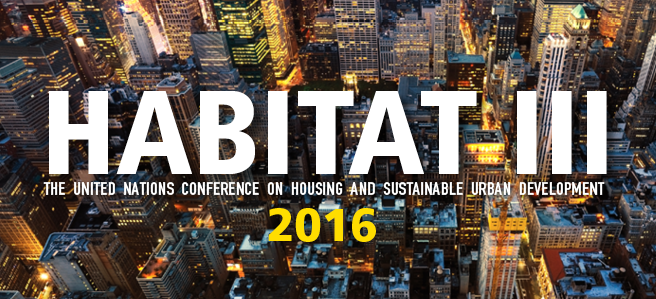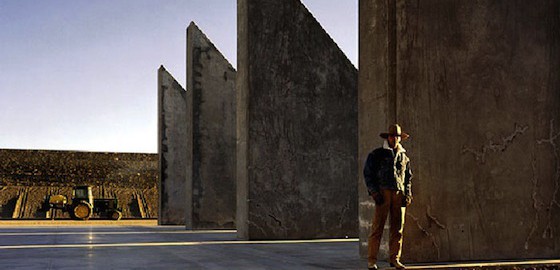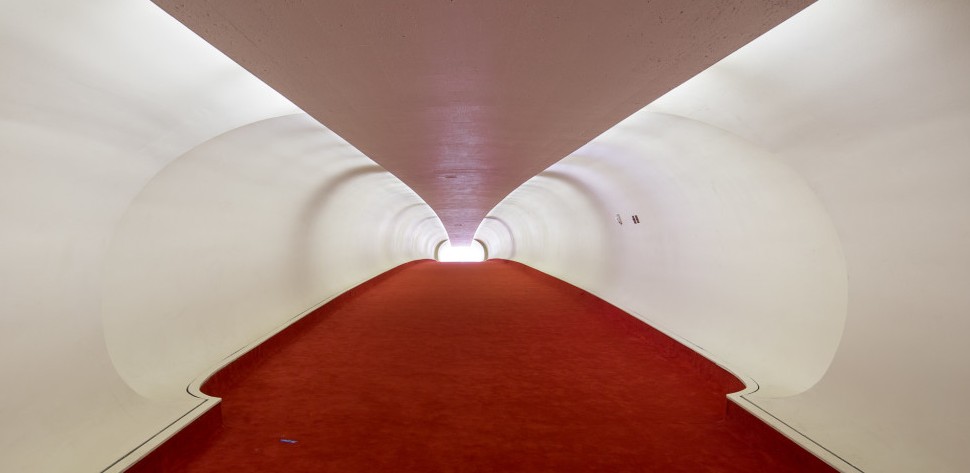· 7 min read
HABITAT III: the role of design, a path to sustainable urbanization

Last friday was held the conference HABITAT III: the role of design, a path to sustainable urbanisation at AIA Chapter in NYC. HABITAT III is an international conference held every 20 years. Under the aegis of the United Nations, the world’s national governments, NGOs and Civil Society meet to develop a joint compact. This compact then informs national policies regarding key issues such as housing, urbanization and social equity for the next 20 years. (…) This program is one of a series of preparatory events designed to help set the agenda for HABITAT III in 2016. (…) HABITAT III will provide a unique opportunity to focus the attention of world governments on the critical importance of a city-scale sustainable urbanization in planning for the future. The goal is to achieve an agreed-upon blueprint that will set the priorities for many countries for the next 20 years.
 Here is a report of what was said by the remarkable panel:
Here is a report of what was said by the remarkable panel:
James McCullar, FAIA, Principal, James McCullar Architecture, and Co-Chair, CSU.
 The architect introduced the panel, announcing the main idea: design can make better cities. It is not only about housing but it is about planning a sustainable urbanization. How to plan for growth? How to avoid the vast pockets of under-served communities we know today? The goals must be applicable at home, thus in the world.
The architect introduced the panel, announcing the main idea: design can make better cities. It is not only about housing but it is about planning a sustainable urbanization. How to plan for growth? How to avoid the vast pockets of under-served communities we know today? The goals must be applicable at home, thus in the world.
Urs Gauchat (moderator), Dean, College of Architecture & Design, New Jersey Institute of Technology, and Board Member, CSU.
** **The moderator introduced the subject and gave us a few reading keys to the scheme. Vision becomes reality through political will. Food needs from people all around the world are growing drastically.
**The moderator introduced the subject and gave us a few reading keys to the scheme. Vision becomes reality through political will. Food needs from people all around the world are growing drastically.
Cities don’t just happen: they are planned, designed, conceived. By who? Nowadays, an inspired team replaced one grand visionary and the process is more important than vision. We have to think a smart growth, which is ecologically responsible.
Great cities are defined by constant reinvention. They have a soul. They are efficient, transparent, full of opportunities. Cities are also in competition: adapt or parish. The role of design is then fundamental to plan the cities of tomorrow.
Dr. Joan Clos, Executive Director, UN-HABITAT, and Secretary General, HABITAT III.
 Dr Joan gave us a lively and realistic speech. He started by this funny statement: in his medicine profession, architects are described as dermatologists.
Dr Joan gave us a lively and realistic speech. He started by this funny statement: in his medicine profession, architects are described as dermatologists.
We have to consider that most of urbanization is unplanned, spontaneous. We can expect 2.5 to 3 billion more people in the cities for the next 30-40 years: that’s an enormous amount of people cities will have to absorb. If we don’t do anything, urbanization is going to happen spontaneously, with an unknown outcome.
Admiring a city is admiring human design, like an artist’s work. Cities are the biggest human creation. There is no way to interconnect the urban fabric without design. Mobility, for instance, needs planning and cannot be spontaneous.
Unfortunately, public space is now out of fashion. We are facing a collection of plots without specific design on layouts of streets and public spaces. Masterplanners work for private companies because there is no money in public agencies. Developers offer juicy affairs to municipalities, and then design a bit of public space, but this is not their job. Developers and municipalities go one after an other…
The street is not protected by the law. An urban plan used to serve as both design and law. We need to reconsider the protection of public space.
There is then the question of the quality of a design: good or bad? An urban plan that doesn’t work, a planning that is wrong, is doing a lot of harm to urban design in general. Remember that we’ve always known how to make cities, but there is a problem of process nowadays. Instead of planning from urbanización to parcelación to construcción as it is learnt at urban schools in Barcelona, we work from the building, to design the plot, and then the city.
At the question if urban agriculture is a future need or a luxury, Dr Joan answers that is a luxury for now. It is not enough impacting for the food effort which is needed.
If there is no public policy to count on, like building villages with good services, spontaneous migration is always towards the biggest cities.
Grahame Shane, Adjunct Professor of Architecture, Columbia University.
** **The wise professor reminded us about the gravity of the situation. Datas, graphics, and various other slides recalled that climate change and resources exhaustion are now to a point of no-return.
**The wise professor reminded us about the gravity of the situation. Datas, graphics, and various other slides recalled that climate change and resources exhaustion are now to a point of no-return.
City design changed over time, as much as a forecast. A new hybrid scale is needed to solution the problems we’re facing. He invites us to look at the alarming James hansen’s speech on climate change.
While the sea level is supposed to raise drastically, and with most cities coastal, everybody is still moving to cities. While modern urbanization spread over the city, we can thank Jane Jacobs and her concept of urban village to have saved a part of what we know today. The city is built by different narrative layers. The mobility of populations and the different sorts of (im)migrations take part to a global scale change.
We shouldn’t forget that formal (up-bottom) and informal (bottom-up) urbanizations are mixing in the city.
James Rausse, AICP, President, APA New York Metro Chapter, and Director, Capital Programs, Office of the Bronx Borough President.
J** **ames believes in a leading sustainable design for the Bronx. It sure requires patience to achieve goals. The main reason holding us back is the generally accepted mechanical point of view: action is supposed to come from federal, to state, to county, to local. Realistically, an organism view would be much more efficient. That is what they’re trying to achieve in the Bronx.
**ames believes in a leading sustainable design for the Bronx. It sure requires patience to achieve goals. The main reason holding us back is the generally accepted mechanical point of view: action is supposed to come from federal, to state, to county, to local. Realistically, an organism view would be much more efficient. That is what they’re trying to achieve in the Bronx.
It took a while but the neighborhood changed a lot for the past decade or so. The Bronx was first built as an urban suburb, a middle-class bastion. It is said that nobody wants to live there but now the city’s population is bigger than the one of San Antonio, a city as big as Dallas! A change of paradigm has been engaged through the 80’-90’, and design is used as a catalyst for social change.
To the question of water and mobility in urban planning, the speaker answers that the first thing to consider is that there are different ways of considering water, all depends on what site and culture we’re reading this key element.
Scott Duncan, AIA, LEED AP, Design Director, Skidmore Owens & Merrill.
** **For this talk, the architect asked his colleagues around the world the question: “What are the 5 factors that will have the greatest impacts on the future of the built environment?”. With all the answers he received, the speaker presents today 7 actions required to design a sustainable urbanization. With each of the following points, a project is presented as a case study.
**For this talk, the architect asked his colleagues around the world the question: “What are the 5 factors that will have the greatest impacts on the future of the built environment?”. With all the answers he received, the speaker presents today 7 actions required to design a sustainable urbanization. With each of the following points, a project is presented as a case study.
7. Sustainable use of water 6. Shift to renewable energy 5. Electric transportation 4. Renovating our cities. For instance, the Barangaroo park in Australia is getting restored to its original ecological condition. 3. Rethinking agriculture. This is the worst thing we’ve done to the environment. We must improve the efficiency of farming. In the project presented, the city is re-designed to be more compact and to fit to walkable distances, which enable to re-organize the surrounding land for agriculture. 2. Responding to sea level rise and climate change 1. Designing without boundaries. Cooperation and global thinking is needed. In this respect, there is a potential dialogue by HABITAT.
About water management, the speaker says that we shouldn’t stop nature from what it wants to do.
To close the discussion, the Consortium for Sustainable Urbanization (CSU) makes a call to any professional who would be interested to join the team to go on working on these significant issues.


